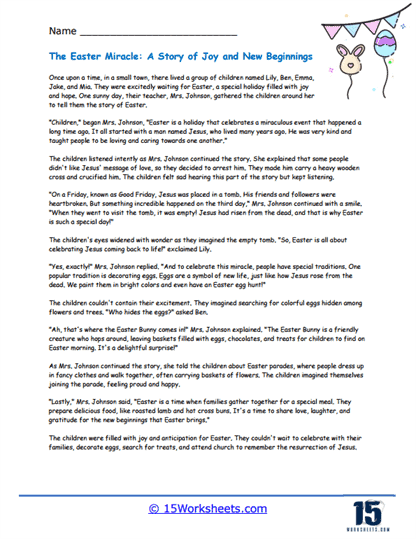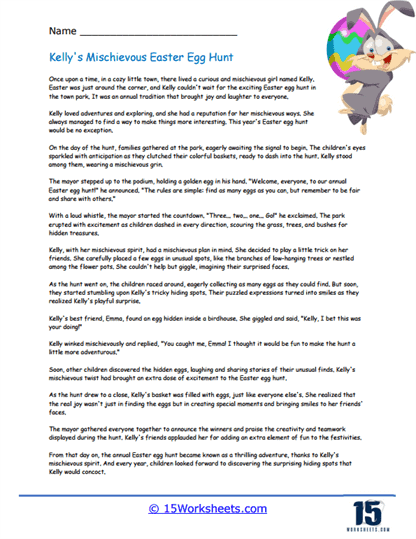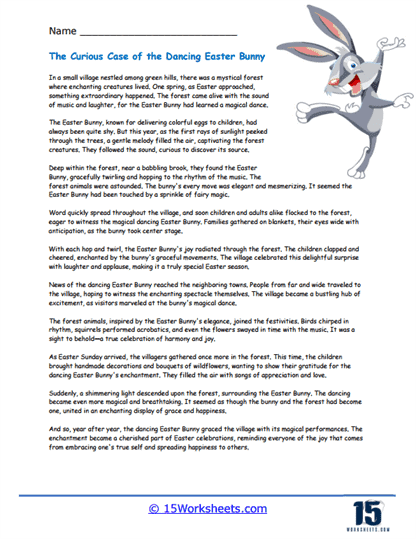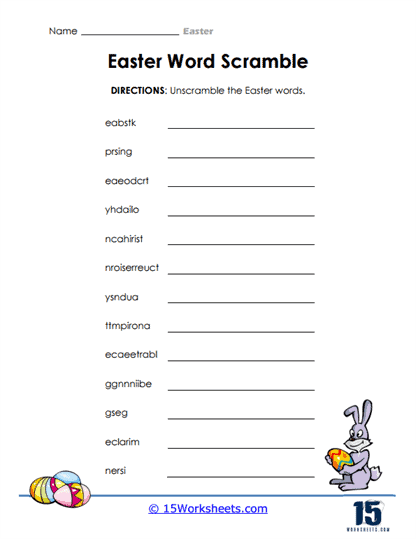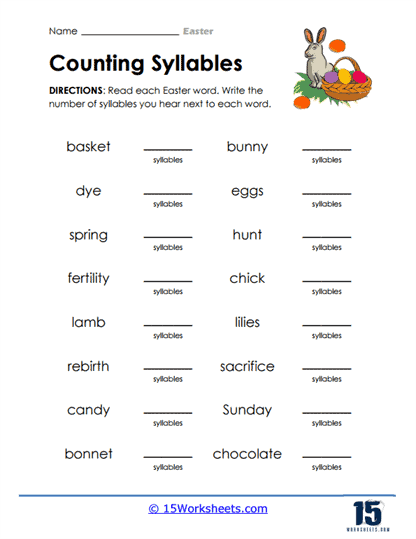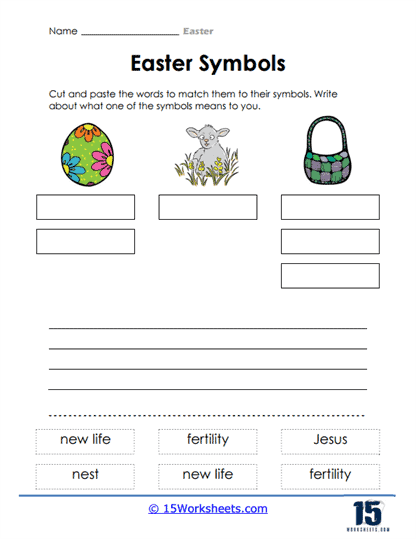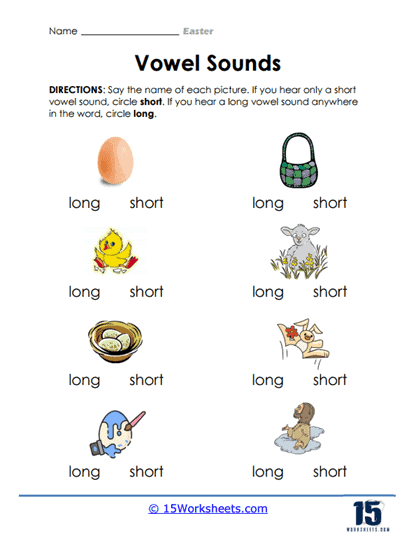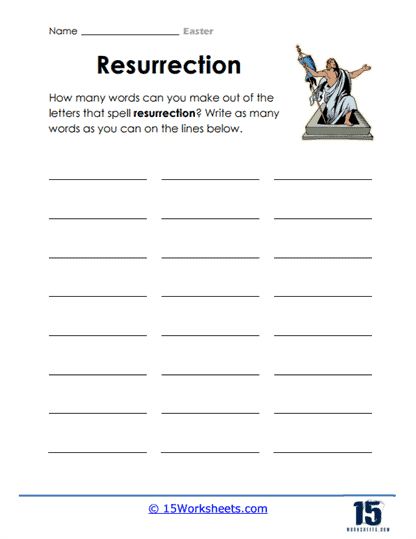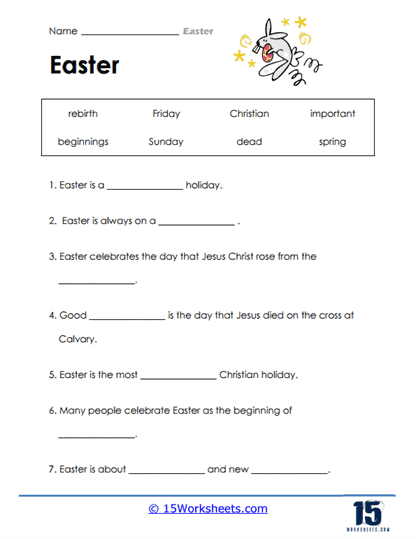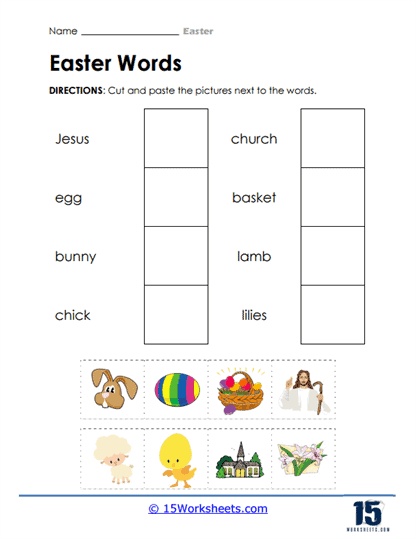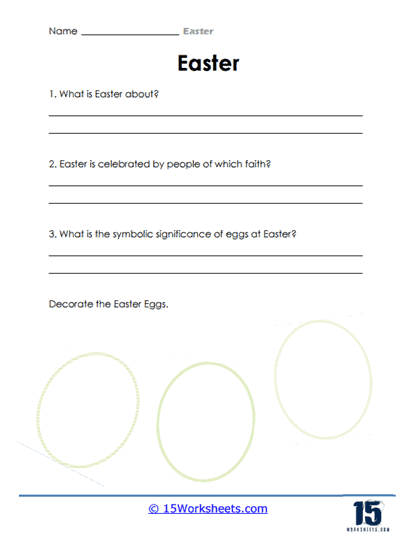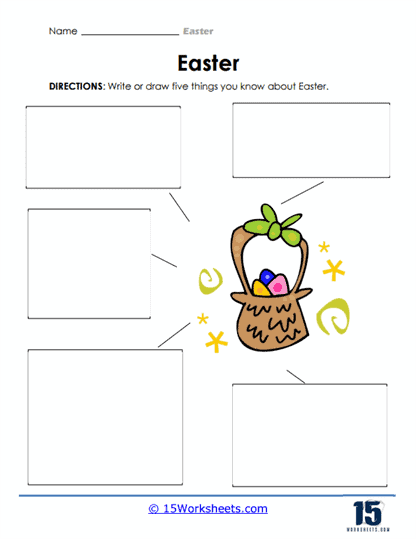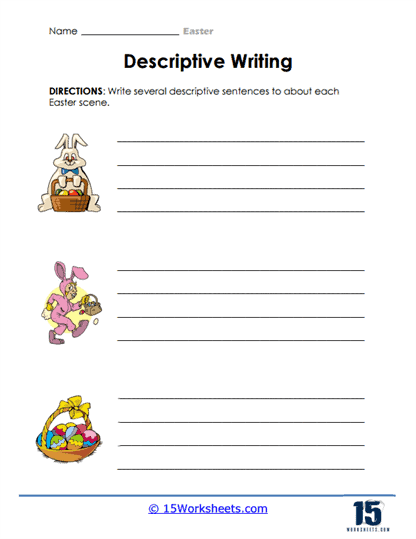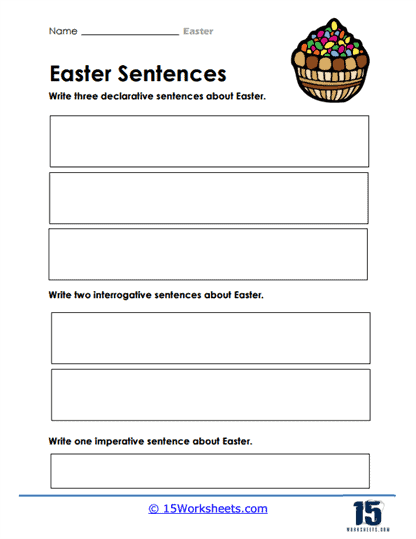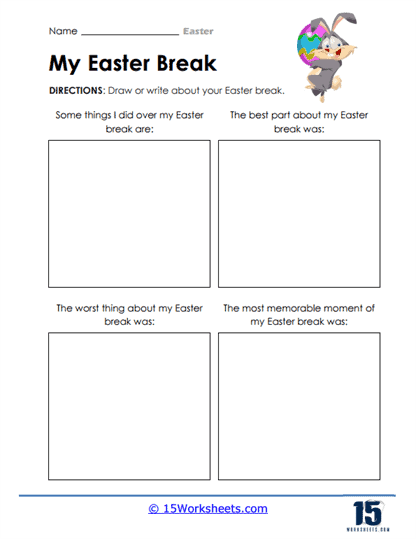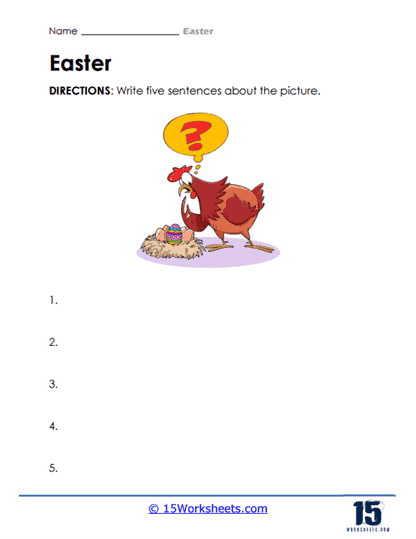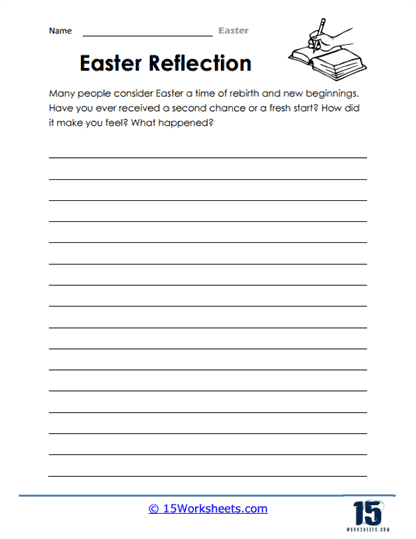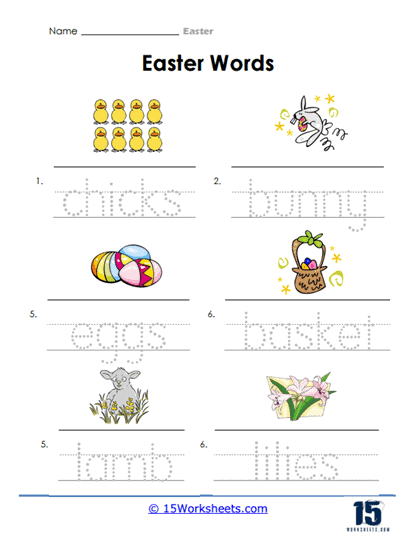Easter Worksheets
All About These 15 Worksheets
This series of 15 worksheets is an engaging and educational resource designed to immerse students in the joyful traditions and spiritual significance of Easter. These worksheets provide an opportunity for them to learn about the history, symbols, and customs associated with Easter, while fostering creativity, critical thinking, and cultural understanding. Through these worksheets, students will:
- Learn about the origins and meanings behind symbols associated with Easter and engage in activities like coloring, drawing, or writing to express their understanding of their significance;
- Expand their vocabulary related to Easter through word activities and writing prompts;
- Express their thoughts and reflections on the spiritual and personal significance of Easter and how it relates to their own experiences;
- And skillfully write their own sentences about this holiday.
This series provides an immersive and educational resource for students to engage with the joyful traditions and spiritual significance of Easter. Through activities encompassing symbols and meanings, cultural exploration, creative crafts, vocabulary exercises, and personal reflection, students will deepen their knowledge, foster cultural appreciation, and enhance critical thinking skills. Overall, these worksheets promote a sense of celebration, inclusivity, and understanding, fostering a meaningful and enriching Easter experience for students.
What is Easter?
Easter is a Christian holiday commemorating the resurrection of Jesus Christ from the dead, which is considered one of the central events in Christianity. According to the New Testament of the Bible, Jesus was crucified, died, and was buried, but he rose again on the third day. This event is seen as a symbol of hope, victory over death, and the promise of eternal life for believers.
Where Is It Celebrated?
Easter is celebrated all around the world, particularly in countries with significant Christian populations. It is observed in various ways, depending on cultural and religious traditions. Some of the countries where Easter is widely celebrated include:
- United States
- United Kingdom
- Canada
- Australia
- Mexico
- Brazil
- Italy
- Spain
- Germany
- Poland
- Russia
- Greece
- Philippines
Easter typically falls on the first Sunday following the first full moon after the vernal equinox, which means that its date varies between March 22 and April 25. The celebration of Easter often includes religious services, such as Mass or a special church service, as well as various customs and traditions.
Common Easter customs include the decoration and exchange of Easter eggs, which symbolize new life and rebirth. In many countries, the Easter Bunny is a popular figure associated with the holiday, bringing gifts or hiding eggs for children to find. Easter parades and feasts are also common, with families and friends gathering to share meals and celebrate together.
In the United States, Easter is celebrated with a mix of religious and secular customs. While practices may vary among families and communities, there are several common American customs associated with the holiday:
Church Services
Many Christians attend church services on Easter Sunday to commemorate the resurrection of Jesus Christ. Some churches hold a special sunrise service, symbolizing the empty tomb discovered at dawn.
Easter Egg Hunts and Baskets
A popular American Easter tradition is the Easter egg hunt, where children search for decorated eggs or plastic eggs filled with treats, usually hidden outdoors by the Easter Bunny.
It is customary for children to receive Easter baskets filled with goodies such as chocolate eggs, candies, small toys, and other treats. These baskets are often said to be delivered by the Easter Bunny.
Decorating hard-boiled eggs with various colors, patterns, and designs is a beloved Easter activity. Some families create intricate designs using dyes, stickers, or paint, while others participate in the tradition of “egg tapping” or “egg knocking,” where two people tap their decorated eggs together to see whose egg cracks first.
Parades
Many communities across the United States host Easter parades, where people dress up in their best outfits or wear elaborate Easter bonnets. The most famous Easter parade takes place in New York City along Fifth Avenue.
The People
Families often gather for a special meal on Easter Sunday. Traditional dishes include ham, lamb, or roast beef, accompanied by side dishes such as scalloped potatoes, deviled eggs, and green beans. Hot cross buns and various desserts like carrot cake, chocolate eggs, and Easter-themed cupcakes are also popular.
It is customary for some people to wear new, brightly-colored outfits on Easter Sunday, symbolizing the renewal and fresh start that the holiday represents. Children may dress up in their best clothes, and women might wear fancy hats or bonnets to church services and gatherings.
These customs represent a combination of religious and secular practices, which together create a festive atmosphere around the Easter holiday in the United States.
It is important to note that while Easter is predominantly a Christian holiday, its celebration may also incorporate elements from pre-Christian, pagan spring festivals, which have been adapted and integrated over time.

